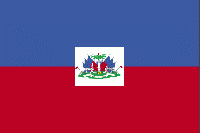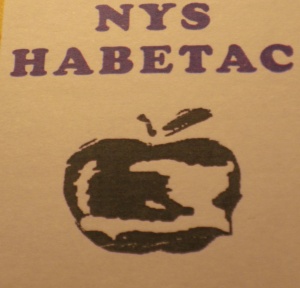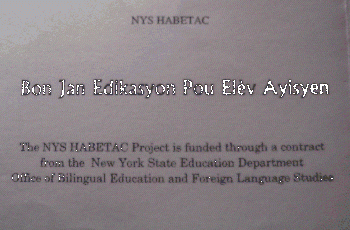Language and Education
From Seminar 2: The Peopling of New York City
Contents |
Intro: Education in NYC Public Schools
If you listen closely, you might be able to hear various English accents and different West Indian languages being spoken on the streets of Flatbush, Brooklyn. French and English Creole-speaking West Indians students make up the majority of Brooklyn’s West Indian population. Many of the students in the New York City public school education system often arrive having completed their secondary education in their home countries in the Caribbean. Because of the economic underdevelopment of these countries, job opportunities are limited. This influences many West Indian students to migrate to the United States to attain a college degree that will help them find job opportunities. When migrating to New York, they bring with them their Creole languages.
Because of the demographics of the neighborhood, Jamaica, Guyana, Trinidad, and Barbados will be the focus of the Anglophone Caribbean countries. In discussing West Indian students from French-Creole speaking countries, Haiti will be the focus.
At times, teachers are ignorant themselves about the culture of these newly arrived immigrants. In a New York Times article, published in 1992, a public middle school teacher at a school in Brooklyn speaks about her impression of the West Indian immigrant students. “All of them speak English, but hardly any will speak perfect English as how I speak because many of them have very weak reading skills," said Doreen M. Reid, a Jamaican-born teacher at I.S. 252. "They speak chiefly patois [a form of Jamaican creole], but that is English as far as I'm concerned" (Sontag 92). In a city, such as New York, that presumably embraces the diversity of other cultures, it is not necessarily true that the cultures themselves are given the understanding they need.
English-Creole Speaking Students: Misplacement and Misunderstanding of Linguistic Needs
Students from the English-Creole speaking West Indian nations bring with them an English-Creole background. When they enter the American educational system, though, they face the expectation that they know the conventions of Standard English when, in reality, the level of proficiency in Standard English varies widely. For example, in Nero Shondel's case studies of English-Creole speaking students, the students' Creole was characterized according to the following Creole continuum: acrolectal (closest to the international standard of English), mesolectal (intermediate between acrolectal and basilectal), or basilectal (most distinct from the international standard of English) (Shondel 492, 2000). Research has shown that American teachers, in particular, assume that only one type of English exists in the world (Shondel 485, 2000). English-Creole speaking countries in the Caribbean speak English Creole, a hybrid language of African and European languages, mainly British English. Teachers in New York City public school system are assuming that these students have an education in Standard English, the "cultural and linguistic bases of English in the world" (Kachru 15, 1977). English Creole has its own unique set of rules. In the following table, the examples of different syntactical features of English Creole and Standard American English are shown:
| CCE | He strong | She tell me everything | He does go to church every week | My father work two job |
| SAE | He is strong | She tells me everything | He goes to church every week | My father works two job |
Source: Adapted from Allsopp (1996), Rickford (1987), Roberts (1988).
That very misunderstanding about the two languages leads to misconceptions by teachers in the classroom (Shondel 495, 2000) and the misplacement of students into English as a Second language programs. In American educational institutions, there is a lack of comprehension of the cultural and linguistic needs of West Indian immigrant students, across all West Indian backgrounds. Consequently, teachers will mistaken the student's use of English Creole as poor English.
Difficulties Faced in the Classroom
By definition, English as a Second Language programs help students who do not know the English language at all, but that is not the case for the English-Creole speaking students (NYC Independent Budget Office 3, 2004). Bilingual programs allow English-Creole speaking students to get help in their native tongue while learning English (NYC Independent Budget Office 3, 2004). French-based Creole speaking Caribbean students would therefore need to rely on ESL, while English-speaking students rely on bilingual education.
To their dismay, many of these West Indian immigrants face a culture shock and tremendous discomfort in the new environment they only just begin to adjust. The students encounter obstacles, such as the following, in their schooling:
• Incorrect assessment of skills • Unfamiliarity with the curriculum • Discomfort with teaching styles, • Low performance on reading and math exams • Inability to communicate in and outside of the classroom
Because education is held as the key to success in West Indian culture, those who migrate to New York City to improve their standard of living view education as a necessary element to gain social mobility and success. This calls for more actions by the government and participation of the Caribbean community itself to address the language issues that affect West Indian students.
French-Creole Speaking Students
Unlike the English-Creole speaking migrants, French-Creole speaking students, typically from Haiti, migrate to New York City knowing French or French Creole, not having a foundation in English. Like English Creole, it is a hybrid of African and European languages, French influencing the syntax and African languages generating the lexicon of the language. The pressure to learn English while having to adjust to the educational system in New York, where Regents tests are a requirement to graduation, can be overwhelming for these students.
More funding should be put into providing bilingual technical services, such as HABETAC, the Haitian American Bilingual ESL Technical Assistance Center. Located in Brooklyn College, HABETAC has built the local capacity of schools and districts to better assist Haitian bilingual students to meet higher standards of education in New York City. In the following interview, a resource specialist at HABETAC offered her opinion on the reason for the difficulties that some Haitian-Creole speaking students face when entering public schools in New York City:
What do you identify as the source of the linguistic problems for the students that utilize your services? ...And I think it’s really ridiculous that you could expect a student in high school who has just gotten here to pass American history….you need to be given some time… and you are expected to pass an English language arts exam. Hard for native speakers, needless to stay for someone who has just gotten into this country. It baffles me. It shows you that the policymakers are not educators ‘cuz if they were, they would have brought that sensitivity and that awareness that we don’t see in the policies that are decided by the politicians. - Interview at HABETAC in Brooklyn College (Listen to the audio of the interview below.)Part i Part ii
Compared to the response to the questions in the rest of the interview, she was most vocal in her response to this question, using powerful words, such as “educational neglect and abuse”, “educational violence” to criticize the policymakers. Her experience as a Haitian immigrant herself and as a former teacher in the New York State public school system definitely contributed to the sense of emotion in her response. Anita later reveals that bilingual education programs have lost funding over the years.
What HABETAC seeks to do is provide opportunities, such as spelling bees, essay contests, and leadership workshops, for Haitian students in the New York State as early as 3rd grade to as late as college to learn and apply English. Most of the students who come to the various events of HABETAC, however, are from Brooklyn. Future educational personnel in New York City will also need to learn about the diversity of language issues that they might encounter in the classroom to help these West Indian migrant students to overcome their discomfort.
HABETAC Interview Transcript
The interviewee at HABETAC is a resource specialist, resident of Brooklyn, and a former Haitian Creole bilingual education teacher in the New York City public school system.
Click here for the transcript of the interview: HABETAC Interview Transcript.
Raising Attention about Education
Since the massive wave of Caribbean immigration in the post-WWII era, linguistic problems have been evident in many of the students who enter the New York State education system from the Caribbean islands. Bilingual education and English as a Second Language Programs arose out of the civil rights laws in the 1960s to address the needs of the diverse group of individuals who came to New York not knowing how to speak English. However, the availability of these programs has declined over the years because of a lack of funding. If continued, the steady inflow of immigrants from the Caribbean coming in the New York City in the future will not be able to transition into the American school environment to pursue an education properly. Such makes it critical to raise attention to this issue and understand what needs rectification in United States education to meet the needs of this immigrant population.
Works Cited
Allsopp, R. Dictionary of Caribbean English Usage. New York: Oxford University Press, 1996.
Irish, J.A. George, ed. Caribbean Students in New York. New York: Caribbean Diaspora Press, 1995: 17.
Kachru, B. Teaching World Englishes. In B. Kachur (Ed.), The other tongue: English across cultures Urbana: University of Illinois Press: 365.
Nero, Shondel J. The Changing Faces of English: A Caribbean Perspective. TESOL Quarterly 34.3 (2000): 485, 492, 494-496.
Rickford, J. Dimensions of a Creole Continuum. Stanford, CA: Stanford University Press, 1987.
Roberts, P. West Indians and their Language.Cambridge: Cambridge University Press, 1988.
Sontag, Deborah. Caribbean Pupil’s English Seems Barrier, Not Bridge. New York Times 28 Nov. 1992.
United States. Central Intelligence Agency. The World Fact Book: Flag of Barbados. 3 May 2008 <https://www.cia.gov/library/publications/the-world-factbook/flags/bb-lgflag.gif>.
United States. Central Intelligence Agency.The World Fact Book: Flag of Guyana’’. 4 May 2008 https://www.cia.gov/library/publications/the-world-factbook/flags/gy-lgflag.gif.
United States. Central Intelligence Agency. The World Fact Book: Flag of Haiti. 3 May 2008 <https://www.cia.gov/library/publications/the-world-factbook/flags/ha-flag.html>.
United States. Central Intelligence Agency. The World Fact Book: Flag of Jamaica. 3 May 2008. https://www.cia.gov/library/publications/the-world-factbook/flags/jm-lgflag.gif.
United States. Central Intelligence Agency. The World Fact Book: Flag of Trinidad and Tobago. 4 May 2008 <https://www.cia.gov/library/publications/the-world-factbook/flags/td-lgflag.gif>.
Wyclef Jean on Flickr. Digital image. [Photo of Wyclef Jean]. 4 May 2008 <http://flickr.com/photos/jazminmillion/2297159689/>.
United States. New York City Independent Budget Office. Inside the Budget: Can Schools’ ESL and Bilingual Programs Make the Grade? New York, 2004: 3.






